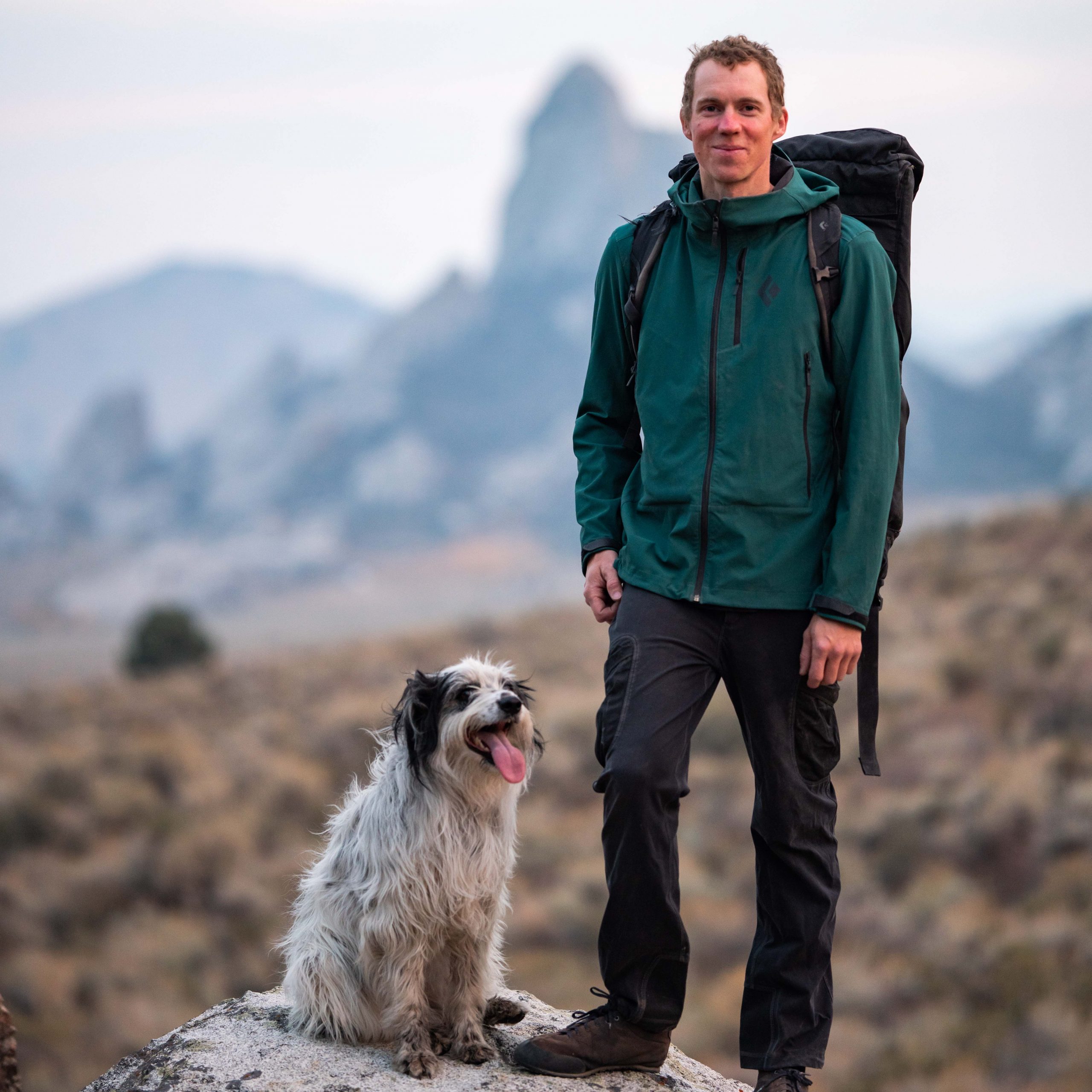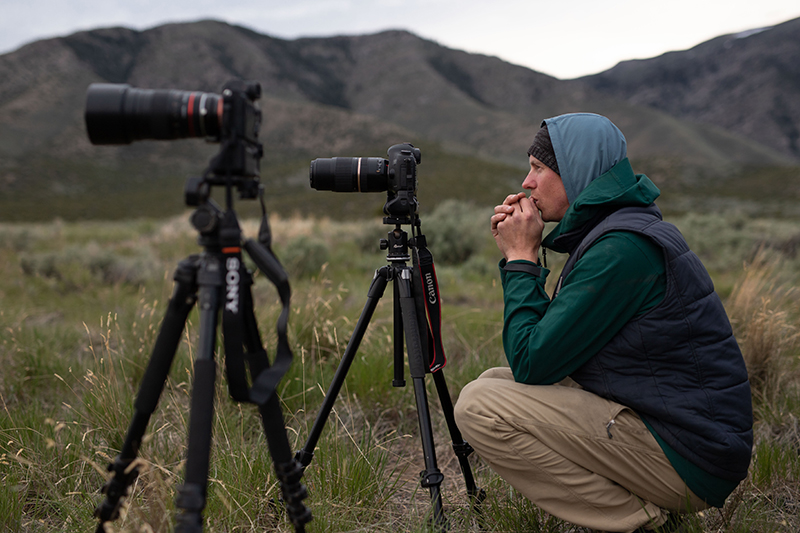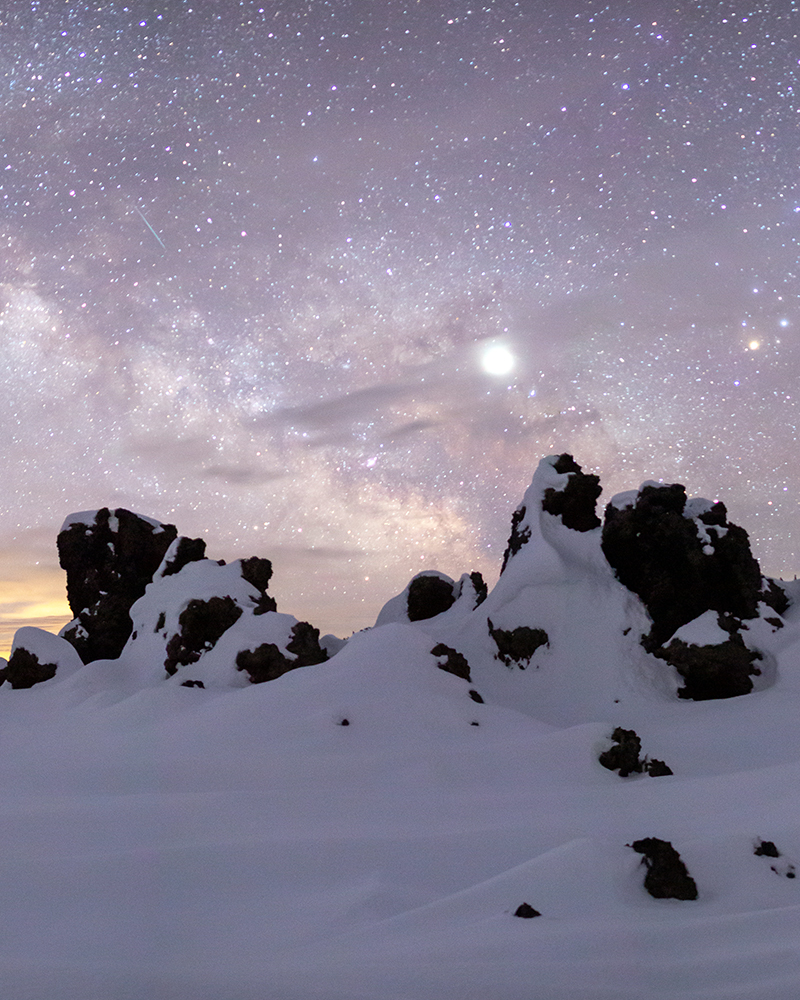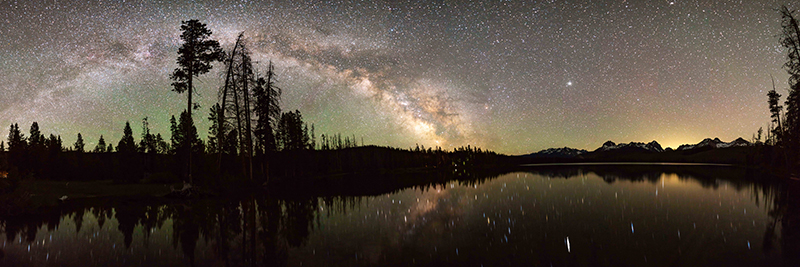SVMoA Blog
Nate Liles: Illuminating the Cosmos Through Art & Advocacy
Ava Scanlan (Communications & PR Manager)

Nate Liles is a seasoned professional photographer/videographer and artist who has lived and worked in the Wood River Valley for many years. Now living in Lander, Wyoming, he will return to the Wood River Valley to teach the workshop. Alongside his artistic pursuits, he has been a dedicated rock climber for more than two decades. His involvement in climbing spurred his engagement in advocacy efforts, fulfilling a crucial role in response to the escalating popularity of climbing as a sport and the surging community of outdoor enthusiasts. He is currently the Development Director of the American Safe Climbing Association (safeclimbing.org). Through astrophotography, he has merged his love of the outdoors and night sky with landscape photography, and has brought his two passions together.
With his exciting workshop on the horizon, we sat down with Nate to discuss art, his inspiration and the great outdoors.
Where is the first place you go when you return to the Wood River Valley?
The first place I go when I return to the Wood River Valley is often to a coffee shop; I love coffee! My favorite spot to go for coffee is Hank and Sylvie’s in Hailey, I typically have an Americano. They have great coffee.
Where are your favorite spots to climb in Idaho?
One of my favorite rock-climbing areas in Idaho is the Lost River Range. It is a breathtaking mountain range east of the Pioneer Mountains over Trail Creek and runs along the Salmon River near Challis. It is an amazing mountain landscape with some of the darkest skies in the lower 48 states, making for great astrophotography opportunities. Also, the Lost River Range offers unbelievable, unique climbing opportunities. My favorite is called The Fins, a limestone formation with incredibly high-quality rock. The quality of the rock makes all the difference: compact rock that is steep with minimal features. It is a combination of difficulty and high-quality stone not often found in this country. It’s the sweet spot — physically challenging, technically perfect rock!
Who is an artist who you have looked to for inspiration?
An artist who has been a great inspiration to me is the photographer Keith Ladzinski. He is unique in that he is one of the best extreme sports photographers as well as one of the best wildlife and landscape photographers out there. He is not so specialized, but he crosses a lot of disciplines at a high level. That inspires me.
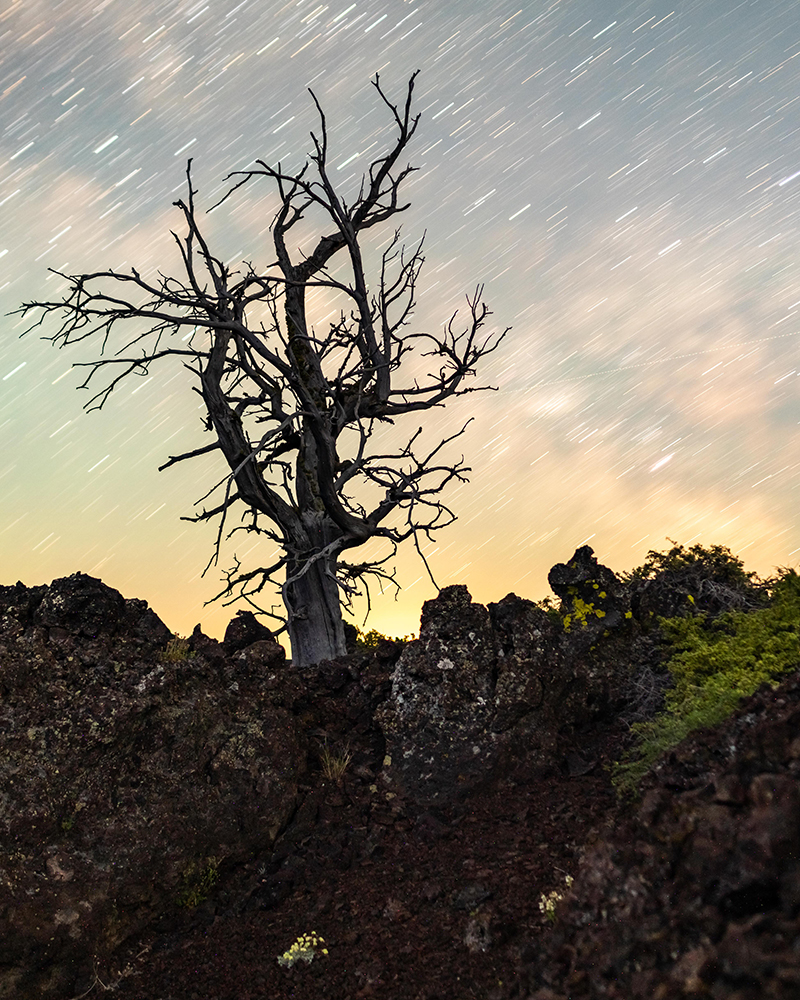
For your SVMoA Astrophotography 101 workshop, you have chosen Craters of the Moon National Monument to be the subject for the class; why that location?
First of all, it is VERY dark. In recognition of Craters of the Moon outstanding night skies and the monument staff’s efforts to preserve and enhance them, the area was designated an International Dark Sky Park in 2017, again with some of the best night sky viewing in the lower 48! A great dark sky resource is lightpollutionmap.info, it’s a website that helps you find dark sky sites and shows you light pollution in an easy-to-understand way.
Second, the otherworldly, almost lunar landscape and fascinating, unique shapes contrasted with the skeleton-style juniper trees against the night sky present an interesting opportunity for photos. My passion for the night sky and landscape comes together in this spot! The night sky and all the elements in it — nebula, stars, and galaxies — are so detached from our reality, there is nothing in it that we recognize. Landscape gives us a sense of place from which we can view the dark sky. Bringing those two things together is my passion.
Speaking of astrophotography, what are your thoughts on the James Webb Space Telescope and the imagery from outer space?
The James Webb Space Telescope is amazing; it’s an incredible look into deep space. Astrophotography from the earth's surface is very influenced by space telescopes, and now there is radically better viewing. In the last decade, it’s become possible with longer lenses and star trackers that compensate for the earth’s rotation to take long exposure photos from Earth with fairly affordable camera gear. The new technology has enough sensitivity to allow one to view objects in deep space. New technologies are more affordable, and digital photography creates images previously impossible!
Craters of the Moon is a very intimidating landscape and just seems like a lot of rock! Where do you go?
Broken Top Loop Trail, out by Snow Cave. It is on the Loop Road, and it’s a great stop! It’s one of the most outstanding trails within Craters of the Moon. Lots of unusual volcanic rock features, lots of trees. But really, you have lots of possible compositions out there; you just have to be creative with the landscape!
What particular equipment and experience should students have before signing up for the workshop?
For equipment: a camera — ideally DSLR or Mirrorless with a wide angle lens or selection of lenses, tripod, remote timer, warm clothing, and headlamp — ideally with a red bulb.
For experience: basic knowledge of how to operate your camera in manual mode — advanced photography skills not required.
The skills we will develop during the class will include pre-trip planning, camera settings and ideal equipment, composition, panorama creation, and post-processing techniques.
References / Website Links
-
Craters of the Moon: hnps.gov/crmo/index.htm
-
Safe Climbing Association: safeclimbing.org
-
Keith Ladzinski: ladzinski.com
-
Light pollution map: lightpollutionmap.info
-
James Webb Space Telescope: webb.nasa.gov
